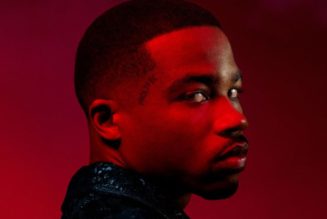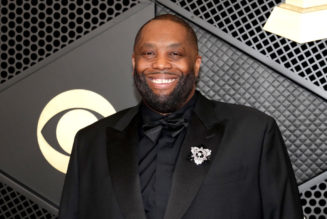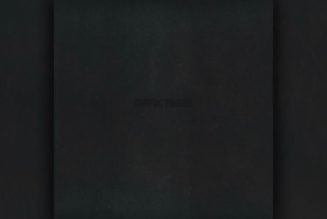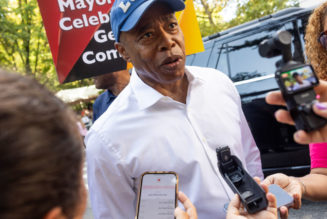
By Grant Sharples
Everyone knows that sound. Immediately after pressing play, that unforgettable melody materializes and bubbles up to the surface just in time for the first chorus. It’s not exactly welcoming; it’s high-pitched and uncanny, peculiar characteristics for one of the most ubiquitous pop songs of the new millennium. Still, it’s one of the catchiest hooks on any song from the 2010s. “Midnight City” is special in that way, and there’s no way M83’s musical architect Anthony Gonzalez could have predicted its staggering popularity.
“When I first made that, I felt stupid,” the French indie-pop artist told Pitchfork in 2011, the same year he unleashed the song. “It’s my voice under heavy distortion, and I was feeling so dumb doing those high-pitched vocals while my girlfriend was sleeping downstairs.” The song that made Gonzalez feel “dumb” ended up being the lead single for M83’s magnum opus, Hurry Up, We’re Dreaming, released 10 years ago today. “Midnight City” was everywhere, appearing in Victoria’s Secret and Gucci commercials and TV shows such as The Mindy Project and eventually Black Mirror. It charted on the U.S. Billboard Hot 100. It received its very own EP of remixes. With its immense media presence, no one could avoid that seismic hook. “Midnight City” led plenty of unassuming listeners into M83’s dreamworld. It provided a gateway into Gonzalez’s music at the exact right moment.
Although Gonzalez had been making music under the M83 moniker since 2001, he wouldn’t cement himself in the indie-pop canon for some time. There was the digital shoegaze of 2003’s Dead Cities, Red Seas & Lost Ghosts; the tremendous Before the Dawn Heals Us, Gonzalez’s first record without M83’s co-founder Nicolas Fromageau; and 2008’s Saturdays = Youth, Gonazlez’s catchiest, poppiest batch of songs at the time. Though he gained more notoriety with each release, he took his cinematic pop approach many steps further with Hurry Up, and “Midnight City” embodies that perfectly.
The climate was right for the song’s release. Festival-sized indie-pop was at its apex, with bands like Phoenix, Passion Pit, and MGMT dominating the genre. In particular, songs like “1901,” “Sleepyhead,” and “Kids” primed the masses to dance to keyboards and synths again. Neon-tinted ‘80s nostalgia was also in full swing, with prominent releases such as Arcade Fire’s The Suburbs, Destroyer’s Kaputt, and eventually The 1975’s eponymous debut serving as watershed releases in the 2010s. But Gonzalez was an expert by the time this strain of homage became a trend. The best encapsulation of this is Fitz & the Tantrums member James King’s memorable saxophone solo toward the end of “Midnight City.”
Just as everyone knows the song’s idiosyncratic hook, everyone also knows that sax solo. Like the song itself at its time and place, King’s horn work arrives at the perfect moment. After another chorus, Gonzalez holds back his vocals for one final moment, and the sax steals the show. King interlocks himself with the hook from the beginning of the track, playing over it but not overshadowing it, and his warm timbre conjures images of a nocturnal Los Angeles that inspired “Midnight City” in the first place. It’s an effortless, masterful conclusion, and it’s just what Gonzalez intended to do. “Sometimes, a song needs an element to be finished,” he told The Guardian in 2011. “You know that this element has been overused in the past and is considered clichéd or cheesy, but the song needs it. With this album, the whole idea was to do something and have no regrets.”
Despite that Hurry Up, We’re Dreaming remains Gonzalez’s most accessible, pop-centric work yet, it is also his most ambitious. It’s his first and only double album, split into a “sister side” and a “brother side.” These are two companion albums treated as siblings, and each track has a mirrored version on its counterpart. For instance, “Intro” is the companion track to the second album’s opener, “My Tears Are Becoming a Sea.”
It’s a lofty proposition, but it seldom feels condescending or dense. These are straightforward pop songs with a handful of interstitial tracks that act as necessary connective tissue. Though Gonzalez was inspired by ‘90s records like My Bloody Valentine’s shoegaze classic Loveless and Smashing Pumpkins’ landmark double album Mellon Collie and the Infinite Sadness, he evokes ‘80s acts like Peter Gabriel, Tears for Fears, and Depeche Mode in songs such as “OK Pal,” “Steve McQueen,” and, of course, “Midnight City.”
Even in the album’s music videos, Gonzalez establishes a grandiose, sci-fi narrative with motifs like youth and innocence. “Midnight City,” which currently has more than 342 million views on YouTube, lays the foundation for an episodic trilogy that continues with two of the album’s other singles, “Reunion” and “Wait.” Although its story skews more toward impressionism rather than concreteness, it reinforces Hurry Up’s status as a unified experience.
To aid him in this immense undertaking, he recruited producer Justin Meldal-Johnsen, whose portfolio now includes Paramore, Jimmy Eat World, and, most recently, Deafheaven. He helped realize Gonzalez’s ‘80s synthpop vision, demonstrating his bass chops on tracks such as “Claudia Lewis” and “Raconte-Moi Une Histoire”; for the latter, he recorded his daughter speaking about magical frogs. Still, this is Gonzalez’s show with his singular, cosmic pop songwriting, which is fully translated in “Midnight City.”
The rather simplistic lyrics of “Midnight City” also aggrandized its mass appeal. With such an assertive hook for its chorus, there are very few words in “Midnight City” at all. For most of its four minutes, Gonzalez ruminates on “waiting in the car, waiting for a ride in the dark.” But the song’s directness isn’t a fault; it conveys exactly what Gonzalez meant it to: the sense of wonder and tranquility that arises while gazing at a luminescent skyline. As he exclaims in one of the track’s most vivid moments, “The city is my church.”
Hurry Up, We’re Dreaming remains one of the definitive indie-pop albums of its decade, and “Midnight City” is the key to it all. It was the entry point into M83’s discography, and its timing couldn’t have been more auspicious. This album and its lead single inaugurated M83 into the synthpop hall of fame and showed the world what Gonzalez was capable of. M83 was behind what is now recognized as one of the best pop songs of the 21st century. To call it pure serendipity would be a severe understatement. It helped establish an identity for indie-pop’s trademark sound.










